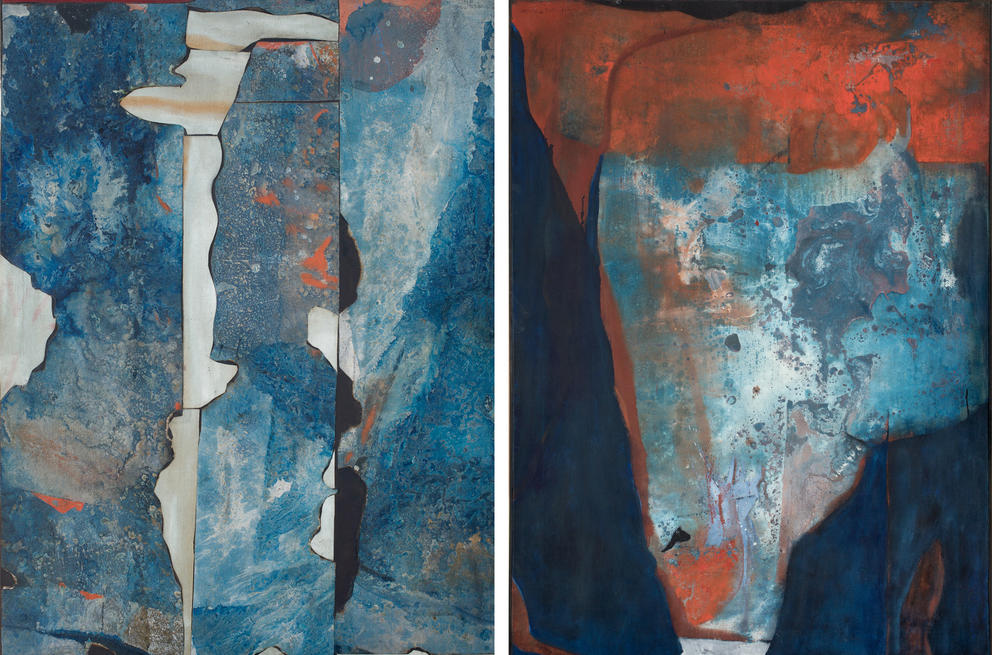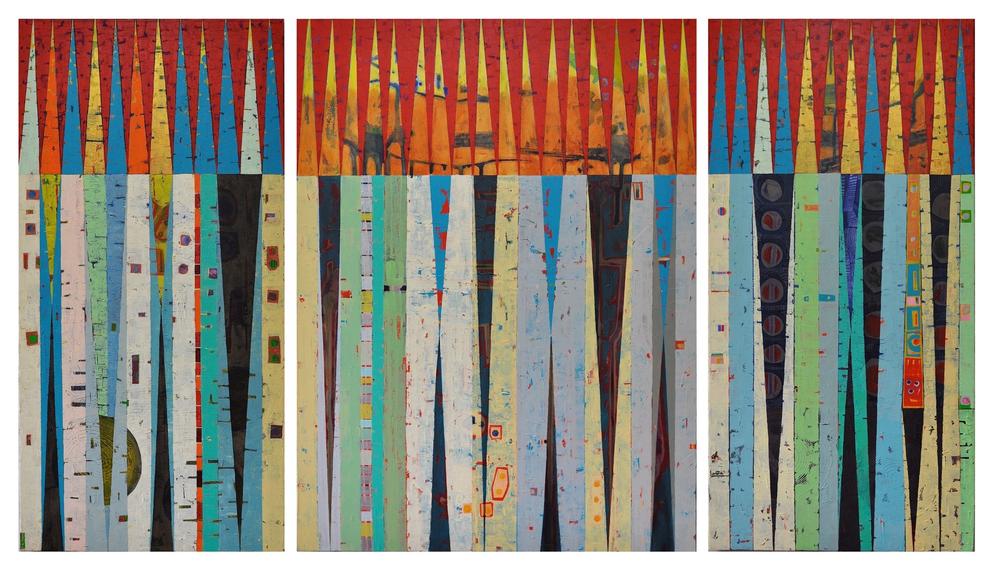First, a bit of micromanaging: I strongly suggest entering the show from the chronological beginning (turn left down the hall when you enter the museum). Fans of Bearden’s striking figural collage work may be tempted to walk straight ahead to dive into those first.
ArtSEA: Notes on Northwest Culture is Crosscut’s weekly arts & culture newsletter.
But seeing the development of the artist — as he explored various methods, including music — makes for a deep sense of “reveal” when you land at his best-known, end-of-career work. Once arrived, you glimpse all the elements and experiments that came before.
Born in North Carolina in 1911, Bearden moved with his family to Harlem, New York, in 1914, as part of the Great Migration. They were soon ensconced in the Harlem Renaissance. His mother, Bessye J., was president of the Negro Women’s Democratic Association and the family moved in circles with Duke Ellington and Langston Hughes.
But as a youth, Bearden preferred spending time with his grandparents in Pittsburgh, hearing their stories of Black life in the South — stories that show up in his work.
When Bearden secured his first art studio in Harlem, it was in a building where painter Jacob Lawrence was also making art. The two shared a rich color palette for a time, influenced by an experimental technique that Bearden developed (mixing gouache with casein) and taught to Lawrence.
Walking through Abstraction — packed with 55 works — we see the young artist move from expressive, almost Cubist watercolors (note the active matador and charging pink horse in “Do Not Ask Me to See It,” inspired by a Federico García Lorca poem) to works that become progressively less representational, with fewer recognizable shapes, into full-on abstraction. It is these abstractions — experiments in color, depth and cut-paper collage — that have rarely been shown.
Some of the milky blue clouds and marbled hues recall traditional Chinese ink-wash painting. (Bearden credits a Chinatown bookshop owner and friend, Mr. Wu, for this influence.) Others bring to mind geological strata, likely because Bearden magnified rocks and crystals as inspiration.
Then, in the mid-1960s he shifts again — inspired by the civil rights movement and his friend James Baldwin, who explained the dangers of abstractions such as “the Negro problem.” Bearden went back to those formative stories of the South, illuminating them with his now famous figural collage work.
Consider an in-depth tour of the show with the Frye’s associate curator Georgia Erger (Sept. 3, 11:30 a.m. - 12:30 p.m.). Or celebrate the return of the museum’s Jazz in the City program with local supergroup The Folks Project, who will illustrate Bearden’s preferred musical inspiration (Sept. 11, 2 - 3:30 p.m.).
And speaking of supergroups: Local theater company The Williams Project is staging The Voices of Legends, a reading of a recorded 1978 conversation between Romare Bearden and friends James Baldwin, choreographer Alvin Ailey, and writer Albert Murray (Sept. 14, 6 - 7:30 p.m.). (Free registration required for most events.)
Or just go and wander amid the paintings on your own, but do go.
When at the Frye, pop into the gift shop to see another impressive abstract work — this one by Seattle artist Moses Sun. You can’t miss the large-scale piece, which is covered in watery green lines that lap at an orange planetary orb. Called “Carolina Conversations with Romare Bearden,” the multimedia piece (painting, drawing, collage) was commissioned by the Frye and pays tribute to the two artists’ shared North Carolina background.
Their connection goes beyond geography. Music plays an integral role in the work of both artists (Beardon listened to jazz when he painted; Sun is moved by hip-hop and Afrofuturist jazz). And in an interview with the Frye, Sun says Bearden was “one of the first African American artists that inspired me to experiment in the studio with all sorts of media.” In creating this homage, Sun “imagined having conversations with [Bearden] about his approach to his subject and techniques he developed over time.”
Sun’s interest in experimenting is also on display in a new solo show at J. Rinehart Gallery in Pioneer Square — definitely worth a visit on this sunny Labor Day weekend. 21 Chambers: A New Beginning (Sept. 1 - 28) features vivacious works whose energetic swirl and pop belies the fact that they are based in painful personal memories. Combining digital and analog art techniques, Sun transforms these histories into expressions of courage and hope.
Another artist sinking pain into painting is Vancouver, B.C.-based Chin Yuen. In Elevation, at ArtXchange Gallery in Pioneer Square (Sept. 1 - Oct. 22), the self-described “maximalist” says she uses vivid color and expressive motion to “uplift and nourish myself and others.” In her artist statement, Yuen notes that she painted these pieces as an escape from personal and global tragedies.
“This work demonstrates my conviction to reach a better state of being by creating something beautiful and positive,” she writes. Yuen, too, finds inspiration in the improvisation of jazz, reflected in these spiky abstract landscapes that hum with rhythm.
Also in Pioneer Square, but with a more muted palette, is a compelling show of new work by Seattle artist Sylwia Tur. With degrees in ceramics and linguistics, Tur abstracts language into small arrays of sculpture, on view at Linda Hodges Gallery (Sept 1 - Oct. 1). The result is a fascinating scavenger hunt of sorts, as you can’t help but try to decipher what the white porcelain shapes are saying. At times you can recognize a letter or two, say, the angle of an “L” and dot of an “i” in “Love and Light.” But the translations are hardly literal — a “B” might be a bowl — which makes them all the more enjoyable.
And in a welcome surprise, longtime Seattle curator and craftsman Curtis Steiner adds painter to his list of artistic skills with Sentient, at Traver Gallery downtown (Sept. 1 - Oct. 1). His first-ever showing of watercolor and gouache works features a softly colored array of curved abstract shapes that seem to blur and ripple at the edges. In a trick of the eye, each biomorphic cell appears to have an actively radiating aura — one that might be a beacon’s warning pulse, or an invitation to come closer.
Get the latest in local arts and culture
This weekly newsletter brings arts news and cultural events straight to your inbox.






